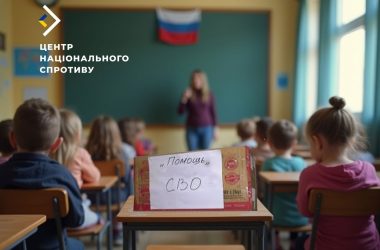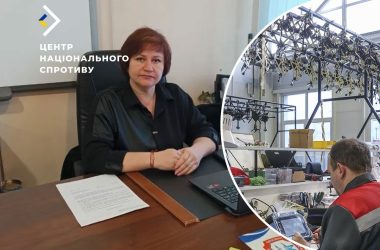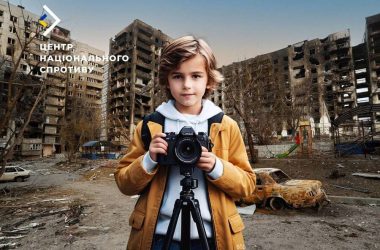This week, the underground eliminated a number of enemies at once, and due to “secret”, the occupiers decided to turn off the mobile Internet for local residents. Here is an overview of the main events in the temporarily occupied territories.
Death to the occupiers
The partisan movement of Crimean Tatars and Ukrainians “Atesh”, which operates on the temporarily occupied peninsula of Crimea, liquidated two occupiers. Employees of the “Rosguard” planned to spend a nice evening and were traveling from Sevastopol to Simferopol, but their plans were destroyed by an explosion.
The car was blown up using an improvised explosive device. Both occupants, who had officer ranks, died.
On February 3, in the temporarily occupied Energodar, the car of Yevgeny Kuzmin who worked for the occupiers, was blown up. The enemy did not survive.
The former policeman betrayed Ukraine and after the start of the full-scale invasion began working in the occupation “MVS”. There he helped to repress the peaceful inhabitants of the occupied city, because at the moment this is the only task of “law enforcement officers” at TOT.
At the same time, the Ukrainian underground continues to demonstrate to the occupiers that they do not control the region. Despite pressure, repression and almost a year-long occupation, the residents of the south are resisting the occupation.
In particular, activists of the public resistance movement “Yellow Ribbon” distributed leaflets in the temporarily occupied territories. They raided the streets of Melitopol, where they posted new leaflets against Russian forced passporting and painted pro-Ukrainian graffiti.
Activists held a similar action in Henichesk. In addition, in Crimea, the Russians were also reminded that they are occupiers on someone else’s land.
Resistance to the occupation also continues in Mariupol, despite the fact that the Russian Federation practically wiped the city off the face of the earth. Local residents will continue to show the occupiers their attitude about them, despite the risks to their lives and tens of thousands of already killed and “filtered” people.
The enemy shuts down the Internet and “hunts” for the hryvnia
No one debunks the myth of the “referendum” and local support for the occupation as well as the Russians themselves. All actions of the occupiers are directed against the local population.
The only mobile operator in the temporarily occupied areas of Luhansk region decided to turn off local mobile Internet. MTS provider announced that the service will be disconnected starting from February 11 due to the order of the occupation government. Also the corresponding service will be excluded from all mobile tariff plans.
However, according to locals, the mobile Internet disappeared in the region as early as February 2. Thus, the enemy wants to ensure the secrecy of their movement during military operations: after all, the Russians know that their every step is tracked by the locals and transmitted to the Armed Forces of Ukraine.
In Berdyansk, the occupiers conducted a raid on currency exchanges in order to deprive the residents of the city of the opportunity to sell hryvnias.
The occupiers block the possibility of buying goods for hryvnias, so local people exchange Ukrainian hryvnias for rubles. However, it is unprofitable to exchange money at the rate set by the occupiers, because it is not a market rate.
Therefore, the Russians decided to block money changers who exchange currency at the market rate. Thus, the enemy wants to increase the dependence of the local population on occupation payments. With this, they expect to improve the pace of “passportization”, because the presence of a Russian passport becomes the only chance to receive social benefits from the enemy.
Unfortunately, the Russians continue to repress the indigenous population of the temporarily occupied Crimea peninsula. Searches were conducted in 25 homes of Crimea Tatars in the Dzhankoy district. As a result, 9 people were detained. They are accused of preparing terrorist attacks and participating in Hizb ut-Tahrir (a political party that the occupiers recognized as terrorist).
In fact, under the guise of fighting “terrorism”, the Russian Federation carries out ethnic cleansing, because the Russian Federation remains an empire that does not recognize the right of peoples to self-determination. The creation of internal and external enemies remains the tool used by the Kremlin to keep Russians under control and justify restrictions on rights and freedoms.
The occupiers do not manage locals to fall in love with the “Russian world”. Citizens in the temporarily occupied territories of Ukraine time and again show a kind of “love” for the Russian Federation, “asvbaditelei” or “respect for Putin”, demonstrating it in all ways. People do not get tired of waiting for liberation and clearly declare it in the most accessible way – by putting up homemade postcards. At the same time, risking your own life. The thirst for freedom among Ukrainians is higher than all other feelings.
Another greeting from the occupied regions of the Kherson region – letters to the occupiers from local residents.




